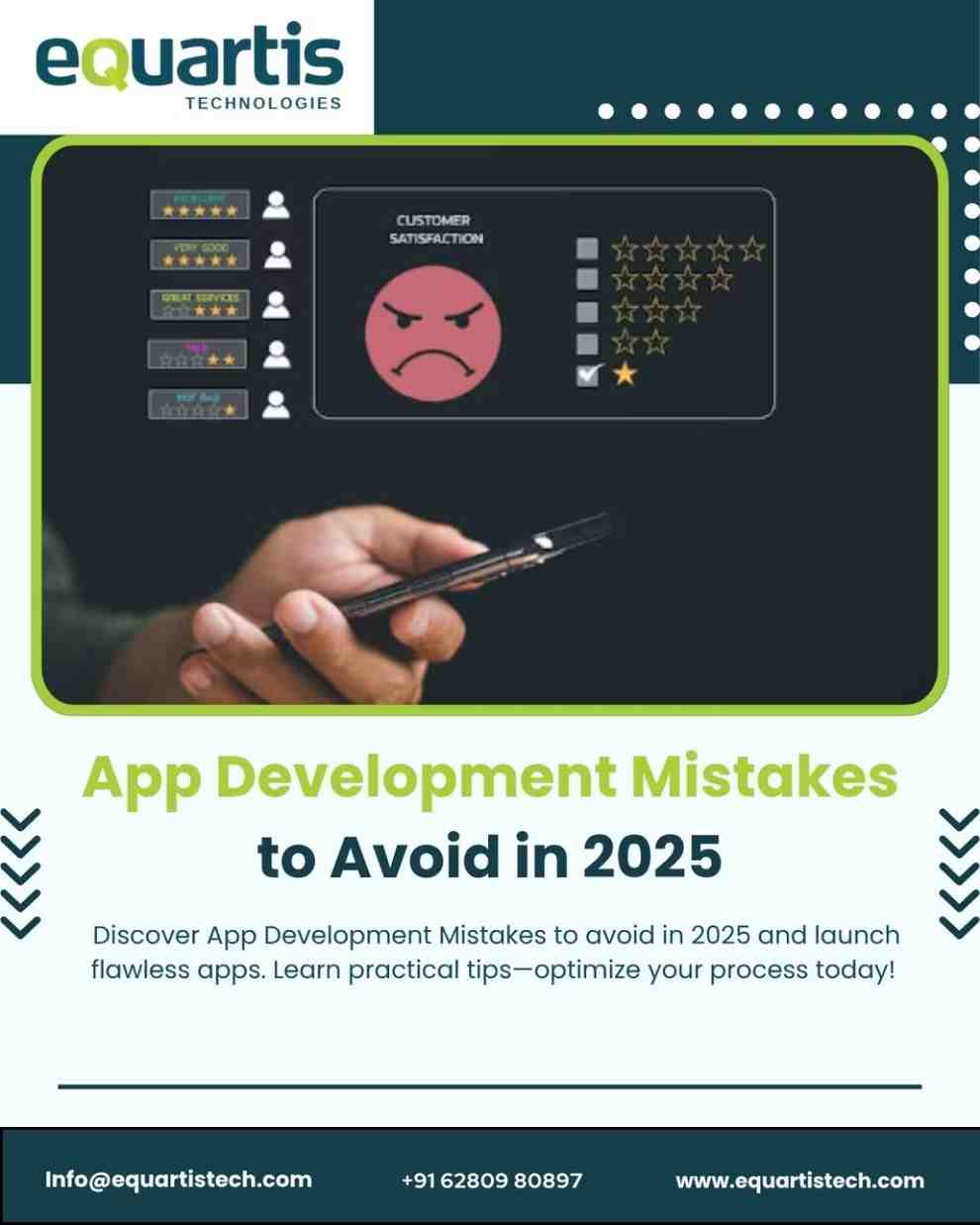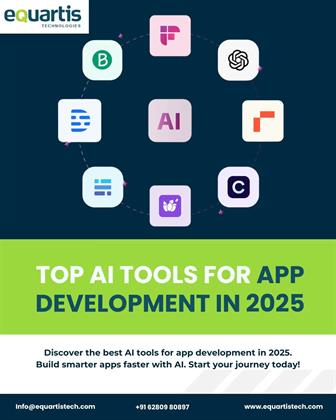
In a crowded marketplace where users have endless choices, even a small error can doom your next release. To succeed, teams must proactively address App Development Mistakes before they derail timelines and budgets. Whether you’re a startup founder or a product manager at a large enterprise, understanding these pitfalls will save you time, money, and reputation.
With user expectations soaring, there’s no room for sloppy planning, subpar performance, or weak security. In this guide, we’ll walk you through the top ten traps that derail projects in 2025—and show you how to sidestep them with proven strategies and real-world examples.
Why the Margin for Error Is Slimmer Than Ever
Advances in hardware, operating systems, and frameworks have raised the bar for what constitutes a “good” app. Users demand instant load times, intuitive interfaces, and ironclad privacy protections. Falling short on any of these fronts translates to uninstalls and negative reviews.
Meanwhile, agile methodologies and continuous delivery pipelines mean features must be rolled out faster. Skipping critical steps in research, testing, or monitoring may shave weeks off development, but it also invites costly rework and brand damage.
To stay ahead in this fast-paced environment, teams need a disciplined approach that balances speed with quality. Let’s dive into the most common missteps and learn how to avoid them.
1. Neglecting User Research and Validation
Skipping user research is one of the gravest mistakes you can make. Without real-world feedback, your team will build features in a vacuum, relying on assumptions instead of data.
Conducting surveys, interviews, and early usability tests helps identify pain points before code is written. Create interactive prototypes and run A/B tests to validate core concepts. This approach reduces wasted effort and ensures your final product aligns with actual user needs.
Only invest in features that solve genuine problems. Integrate analytics from day one to track engagement metrics and iterate based on observed behavior. By prioritizing the user from the outset, you’ll dodge costly pivots later in the cycle.
2. Ignoring Performance Optimization and Scalability
An app that crashes or lags under heavy use will frustrate users and harm your brand. Performance should never be treated as an afterthought.
Optimize asset sizes, minimize network requests, and leverage lazy loading for non-critical resources. Implement caching strategies and content delivery networks (CDNs) to accelerate response times globally. Scalability planning is equally important—design your backend architecture to handle sudden traffic spikes without downtime.
Load-testing tools and real-time monitoring provide visibility into bottlenecks. By embedding performance checks into your CI/CD pipeline, you ensure every release meets speed and reliability standards, even as your user base grows.
3. Overcomplicating User Interface and Experience
A sleek interface doesn’t guarantee usability. Overloading screens with options, nested menus, or excessive animations can overwhelm users and increase churn.
Focus on simplicity and clarity. Prioritize core user journeys—map out the essential steps your customers must take and strip away distractions. Use consistent visual patterns, clear calls to action, and accessible typography. Remember that fewer taps and less scrolling result in higher engagement and retention.
In the realm of mobile app development, designing for one hand, thumb-reachable zones, and offline modes can dramatically boost satisfaction. Test prototypes on actual devices to catch UI misalignments early and refine interactions based on real feedback.
4. Skipping Ongoing Updates and Maintenance
Releasing version 1.0 is only the beginning. App users expect frequent updates that fix bugs, improve features, and address security issues.
Establish a maintenance schedule with regular check-ins for dependency upgrades, platform changes, and compatibility patches. Automate code reviews, unit tests, and integration tests to catch regressions quickly. Communicate your update roadmap transparently—users appreciate knowing when new features and fixes will arrive.
Neglecting post-launch support leads to outdated codebases, security vulnerabilities, and eroded trust. Make continuous improvement part of your culture to keep your app robust and relevant.
5. Underestimating Security and Privacy Requirements
Data breaches and privacy scandals dominate headlines, making security a top user concern. Treat security as a core feature, not a checkbox.
Implement end-to-end encryption for sensitive data, use secure authentication flows, and apply the principle of least privilege in your backend services. Regularly audit third-party libraries and patch vulnerabilities immediately.
Comply with regulations such as GDPR and CCPA by securing user consent and enabling data deletion on demand. Transparent privacy policies not only reduce legal risk but also build user confidence in your brand.
6. Overlooking Cross-Platform Consistency and Testing
By mid-project it’s easy to assume your app works everywhere—but differences in screen sizes, OS versions, and hardware can lead to inconsistent experiences. App Development Mistakes in cross-platform delivery can alienate large segments of your audience.
Use automated testing frameworks that cover both iOS and Android environments. Run tests on emulators and real devices to catch UI glitches, permission issues, and performance variances. When possible, leverage platform-agnostic tools or modular code structures to share logic between versions without sacrificing native quality.
Consistent branding, feature parity, and unified analytics across platforms strengthen user trust and streamline maintenance.
7. Choosing the Wrong Development Partner
Whether you work with freelancers, an external agency, or an internal team, vetting your app development company is critical. Mismatched expectations, communication breakdowns, or skill gaps can stall progress and inflate costs.
Look for partners with proven domain expertise, transparent processes, and strong portfolios. Conduct technical interviews, review code samples, and ask for client references. Define clear deliverables, milestones, and feedback loops in your contract.
A collaborative relationship built on shared goals and open communication reduces misunderstandings and drives projects to on-time, on-budget success.
8. Neglecting Onboarding and User Education
The first few minutes of app use determine long-term engagement. If users struggle to understand basic functionality, they will abandon your app before exploring advanced features.
Craft an intuitive onboarding flow with concise tooltips, interactive demos, or guided walkthroughs. Offer contextual help and access to FAQs or chat support as needed. Highlight key benefits without overwhelming new users with too much information at once.
By investing in thoughtful user education, you’ll see higher activation rates and fewer support tickets.
9. Disregarding Platform Guidelines and Store Requirements
Each platform enforces specific design, security, and content policies. Ignoring them can lead to rejection during submission—costing precious time and resources.
Understand the review guidelines for both iOS and Android. Optimize icons, screenshots, and metadata to meet App Store and Play Store standards. Localize your listing to improve discoverability in global markets.
In the realm of android app development, misuse of permissions or background services is a common rejection trigger. Stay current on policy updates and incorporate guideline checks into your release process.
10. Mismanaging Project Scope and Budget
Scope creep is the silent killer of app projects. Adding features mid-stream without reassessing timelines and resources leads to delays and cost overruns.
Define a minimum viable product (MVP) with must-have features, then plan subsequent phases for enhancements. Use agile sprints to deliver incremental value and gather feedback. Track expenses against your budget continuously, and be prepared to pivot scope if priorities change.
Disciplined scope management keeps teams focused, ensures steady progress, and maximizes return on investment.
Emerging Trends and Opportunities in 2025
As we look ahead, several technologies and methodologies will shape successful app projects:
AI-Driven Personalization: Dynamic content and interfaces that adapt to individual behavior.
Progressive Web Apps (PWAs): Bridging web and native experiences for wider accessibility.
Low-Code/No-Code Platforms: Faster prototyping and iteration, empowering citizen developers.
Edge Computing: Reduced latency for real-time features, from AR filters to live collaboration.
Sustainable Development Practices: Energy-efficient coding and resource optimization for greener apps.
Staying informed about these trends will help you avoid outdated approaches and embrace cutting-edge solutions.
Building a Roadmap to Avoid These Pitfalls
To transform best practices into action:
Audit Current Processes: Identify where past projects stumbled, from requirements gathering to post-launch support.
Invest in Training: Equip teams with the latest tools and frameworks for security, testing, and performance.
Establish Clear Metrics: Track KPIs like crash rate, load time, user retention, and feature adoption.
Adopt Continuous Delivery: Automate builds, tests, and deployments to catch issues early.
Foster Cross-Functional Collaboration: Bring designers, developers, QA, and analysts together from day one.
Iterate Based on Feedback: Use analytics and user reviews to prioritize improvements in each release cycle.
A structured roadmap anchored in data and aligned with business goals will help you dodge common traps and achieve long-term success.
Conclusion
In 2025, robust planning and disciplined execution are non-negotiable. By recognizing and preventing these ten App Development Mistakes, your team can deliver high-quality, user-centric applications that stand out in a competitive landscape.
Whether you’re refining your first MVP or scaling a global platform, the right mix of research, performance tuning, security measures, and continuous improvement will safeguard your project from costly rework. Embrace best practices, partner with trusted experts, and stay agile in the face of evolving trends.
Leave a Reply
You Might Like Also

Optimizing Mobile Apps for Better User Experience

Voice UI for Apps: Creating Hands-Free Experiences

Importance of UX UI Design in Mobile App Success

Effective Digital Marketing Solutions for Panchkula













